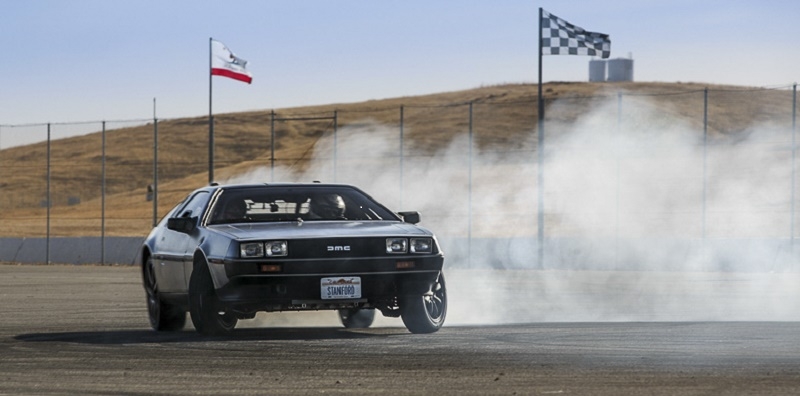To coincide with 'Back To The Future Day' - October 21, 2015, being the date Marty McFly visited in Back To The Future II - engineers at the Revs Program at Stanford have unveiled MARTY, a self-driving, electric DeLorean.
The University students teamed up with electric car startup Renovo Motors to develop MARTY, short for Multiple Actuator Research Testbed for Yaw control, as part of an experiment to see how autonomous vehicles handle the most extreme driving situations. "We think automated vehicles should be able to execute any maneuver within the physical limits of the vehicle to get out of harm's way," explained Chris Gerdes, a professor of mechanical engineering at Stanford, to Wired.
Students had their work cut out for them just getting the 1981 vehicle to run smoothly. They added a new power steering system, coil springs, roll cage and independent electric motors at every wheel. Renovo supplied the DeLorean's electric engine which can theoretically generate up to 500 horsepower.
Being an experiment in handling rather than situational awareness, the DeLorean uses GPS mapping as opposed to the radar or cameras found in Google and Tesla's autonomous vehicles, so it isn't equipped for public road use.
As you can see in the video, engineers have been teaching the DeLorean to drift like a pro. "The sublime awesomeness of riding in a DeLorean that does perfect, smoke-filled doughnuts by itself is a mind-bending experience that helps you appreciate that we really are living in the future," Jonathan Goh, one of the Stanford engineers, said in a statement.
Gerdes pointed out that drifting would work as a tool that autonomous cars could use to avoid accidents. The team is using MARTY to explore how autonomous cars can maintain control at the limits of handling, and ultimately hopes the car will be able to participate in a drifting competition with a human driver.
"A drift competition is the perfect blend of our two most important research questions – how to control the car precisely and how to design automated vehicles that interact with humans," Gerdes said.
